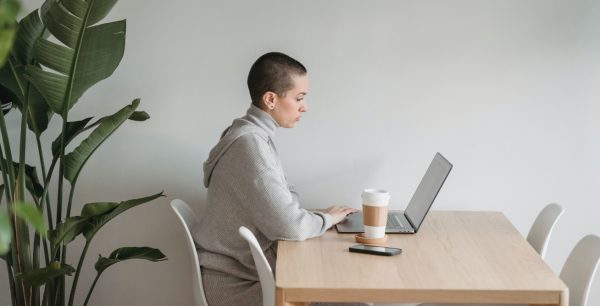Screen Recording on a Mac: Privacy Concerns and Measures
Screen recording has become an essential tool for many of us, whether we are creating instructional videos, reporting software bugs, or conducting virtual meetings. However, privacy concerns around screen recording, especially on Mac devices, have been increasing in the digital age. Whether you are a content creator or just a tech enthusiast, you need to understand the potential threats, and the measures to protect your privacy.
At McAfee, we pride ourselves on being a leading provider of internet security products. Our team of experienced cybersecurity professionals is dedicated to building protective barriers against the vulnerabilities inherent to digital technology. In light of these prevailing privacy concerns, we have compiled a comprehensive guide on managing privacy while screen recording on your Mac device. This guide aims to equip Mac users with the knowledge they need to balance the need for screen recording with ensuring their privacy.
Understanding the Privacy Concerns in Screen Recording
The essential factor in comprehending the privacy implications of screen recording is understanding how it works. When you conduct a screen recording on your Mac, everything visible on your screen is captured. This includes your email if it’s open, notifications that pop up, and even your browser history if you’re not careful. These recordings can inadvertently capture sensitive information, which when shared, could compromise your privacy or security.
Furthermore, there’s a risk of screen recording applications being misused. Some malicious apps or websites could potentially trigger screen recording without your awareness, capturing information you thought was private. Understandably, these possibilities raise considerable privacy concerns, which need to be addressed.
→ Dig Deeper: Before You Download: Steer Clear of Malicious Android Apps
Essential Privacy Measures when Screen Recording on a Mac
Whether you’re capturing important work-related content, creating educational tutorials, or simply sharing your screen with friends and family, understanding and implementing essential privacy measures is crucial. Explore tools and techniques you can use to safeguard your personal and sensitive information while making the most of Mac’s screen recording feature.
Verify Third-Party Apps
Apple recognizes the privacy issues associated with screen recording and has integrated mitigation measures into macOS. The screen recording feature built into macOS – Screenshot app – has crucial privacy safeguards in place. For instance, when the recording starts, you’ll see a red icon on the menu bar. This feature can’t run silently in the background, significantly reducing the chances of covert screen recording. Therefore, using the built-in recorder instead of third-party apps is a wise privacy decision.
→ Dig Deeper: Are Third-Party Apps for You?
Additionally, starting from macOS Mojave, apps need to request your permission before accessing the screen recording feature. This system alert comes equipped with explicit language to inform you when an app wants to capture your screen. Always check and verify the app that’s asking before granting permissions. Unfamiliar app requests can be a red flag.
Use Mac’s Built-in Screen Recorder
Apple understands the crucial importance of privacy in the digital era. To address this, they have integrated a screen recording feature directly into the macOS operating system, specifically in the Screenshot app. This feature allows users to easily record their screen activity without having to resort to potentially insecure third-party applications. This built-in screen recording feature is designed with a number of privacy safeguards to help protect users from covert screen recording.
One such measure is a visible notification system that alerts users when a recording is in progress. Whenever screen recording is initiated, a red icon will appear on the menu bar to indicate that a recording is taking place. The goal of this measure is to prevent screen recording from happening silently or without the user’s knowledge. This is a significant improvement over many third-party screen recording applications that may not provide such clear indications of when a recording is happening.
The ability to monitor when and by whom screen recording is being carried out significantly reduces the potential for privacy breaches. As a result, using the built-in screen recording feature is considered a wise privacy decision.
Permission Requests and Explicit Language
Starting from the macOS Mojave version, Apple has further bolstered the privacy protection mechanisms associated with screen recording. Before an application can access the screen recording feature, it must first request the user’s permission. This is done through a system alert that features explicit language to inform users of the request to capture their screen activity.
Users should always carefully review the information provided in these alerts before granting permission. In particular, it’s important to verify the identity of the application that is making the request. If an unfamiliar or suspicious application is asking for permission to record the screen, this might be a red flag indicating a potential security risk.
Enhance Security with a Built-In Firewall
Mac users can also enhance their device’s security by making use of the built-in firewall settings. This tool can help users control which applications have access to network resources, further reducing the potential for unauthorized screen recording. This proactive measure not only protects your screen recording activities but also contributes to your overall online safety and peace of mind.
→ Dig Deeper: Firewalls: Still Your First Line of Defense
Avoid Capturing Sensitive Information
When planning a screen recording, it’s crucial to pay attention to what information is on the screen. Before you hit that record button, close irrelevant tabs and applications, and ensure no notifications are set to pop up during the session. Remember, even the most trivial-looking information can be a gold mine for identity thieves and hackers.
You can also reduce the likelihood of capturing unwanted data by opting for partial screen recording if you don’t need to capture the entire screen. Limiting the recording area to the application or window you want to focus on will not only minimize the risk but also lead to a cleaner, more professional recording.
→ Dig Deeper: Mobile Spyware: How Hackers Can Turn Your Phone Into a Stalking Machine
Responsible Storage and Sharing of Recordings
It is not enough to just be careful during the screen recording process. How you handle the recorded material afterward is also important. As a rule of thumb, always review the recording before sharing it. This way, you can catch any sensitive details that may have slipped into the recording.
When it comes to sharing, avoid public, open platforms unless absolutely necessary. Use secure platforms with end-to-end encryption for sharing such files. A feature offered by many cloud services is the option to password-protect files. This additional layer of security is particularly useful when sharing sensitive screen recordings.
McAfee Pro Tip: Encrypt your files before you share and upload them online. The majority of cloud services lack the ability to incorporate extra layers of encryption, but numerous user-friendly tools are available to assist you in this task, like McAfee Livesafe.
Keep Your macOS and Security Applications Up-to-date
Apple regularly updates macOS with the latest security patches and new features to safeguard against emerging threats. Therefore, ensuring your Mac runs the most recent macOS version is crucial for privacy. Also, remember to keep your antivirus software – like McAfee+ – updated. These software updates often include patches for new security vulnerabilities discovered since the last version, thus giving your Mac added protection against privacy breaches.
While screen recording brings many conveniences, its potential to compromise privacy cannot be overlooked. Therefore, having a clear understanding of privacy implications and the know-how to safeguard personal data will empower you to use this feature confidently and securely. Up next, we will delve into how you can specifically use the Screenshot app’s screen recording feature on your Mac while maintaining your privacy.
 Home
Home








